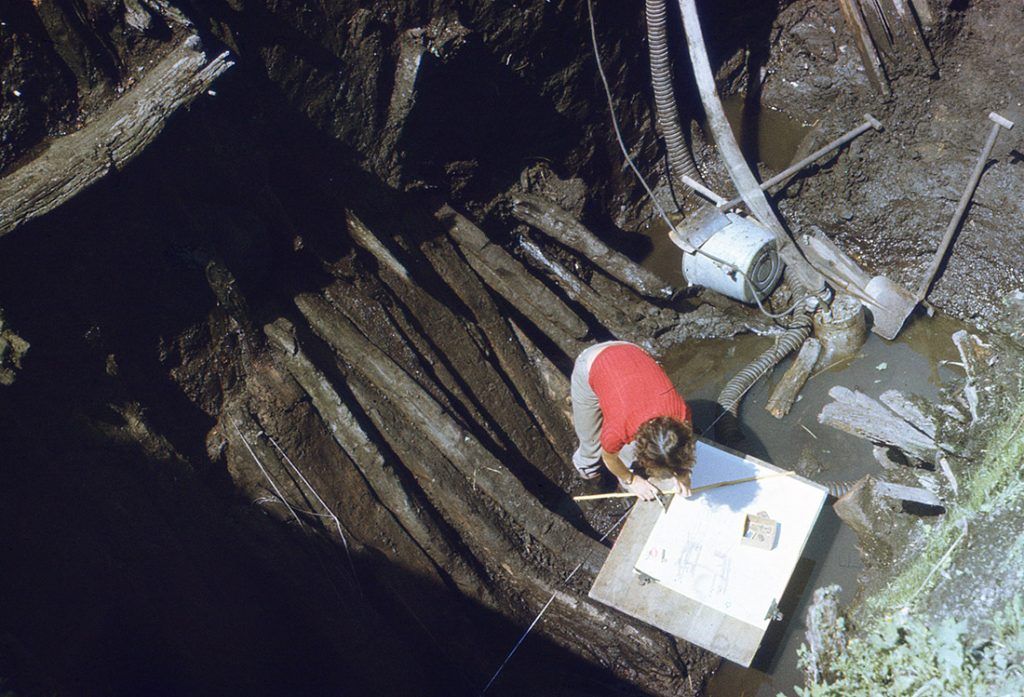Accidental Wolin discoveries occurred in the 17th century. B. Steffen conducted first Wolin archaeological reconnaissance in 1827. Next research took place in 1871, when Rudolf Virchow commenced his search. His discoveries evoked enormous interest in Wolin history and as a result many German scholars intended to study history of the city, including E. Küster, H. Lemcke and O. Olshausen, A. Stubenrauch, C. Schuchardt, A. Kiekiebusch, E. Walter. Main inspiration was the discussion ongoing since the 17th century regarding problem of the Jómsborg location - mythical Viking stronghold, as well as the legend of Vineta and its location.
In the 1930s, systematic research was commenced in Wolin, which was led by Otto Kunkel - director of the Pommersches Landesmuseum. Excavation works were conducted on the site by Karl August Wilde, who obtained PhD in archaeology at University of Greifswald in 1937. Main purpose was finding Vineta and Jómsborg with enormous propaganda potential for the Third Reich. In 1934-1939, extensive stationary excavations were conducted on the market square in the city centre and at Silver Hill (Srebrne Wzgórze) - alleged location of Jómsborg. Moreover, research on cemetery from Early Middle Ages at Młynówek hill was conducted in 1936-1938. Additionally, smaller works were also conducted in various parts of the city. Research results were published only partially in doctoral thesis of K.A. Wilde, as well both his and O. Kunkel’s reports.


After World War II archaeological works commenced in 1952. Władysław Filipowiak conducted one of the first underwater archaeological surveys in Poland, preceding construction of the bridge in Wolin. Further research has been continued for the next decades and it included focusing on southern part of the city, in the Old Town area, at the cemetery on the hill called Młynówka, Silver Hill and Hangman Hill in so-called Ogrody district. Research has always been led by scientists of Wolin Archaeological Workshop of the Institute of Material Culture History of the Polish Academy of Sciences in Wolin (currently the Institute of Archaeology and Ethnology of the Polish Academy of Sciences).


Archaeological works in Wolin enjoyed great interest in Poland and abroad. They constituted an experimental ground for research methodology, as well as a place of professional training for archaeologists worldwide. Significant efforts and dedication of archaeologists and employed Wolin inhabitants contributed to one of the best and largest collections in this part of Europe, consisting of hundreds of thousands monuments from the Early Middle Ages, as well as numerous scientific reports.



